June 17, 2025 | 14:39 GMT +7
June 17, 2025 | 14:39 GMT +7
Hotline: 0913.378.918
June 17, 2025 | 14:39 GMT +7
Hotline: 0913.378.918
At the recent workshop on "Preliminary production of the autumn-winter crop, the 2022 crop and implementing the production plan for the winter-spring crop 2022-2023 in the Southern region", the Vietnam Food Association (VFA) informed that for the first eight months of 2022, Vietnam's rice exports reached nearly 4.8 million tons, with a turnover of at least 2.3 billion USD, which is an increase of 20.7% in quantity and 9.89% in value over the same period last year. The average export price of rice reached more than 486 USD/ton.
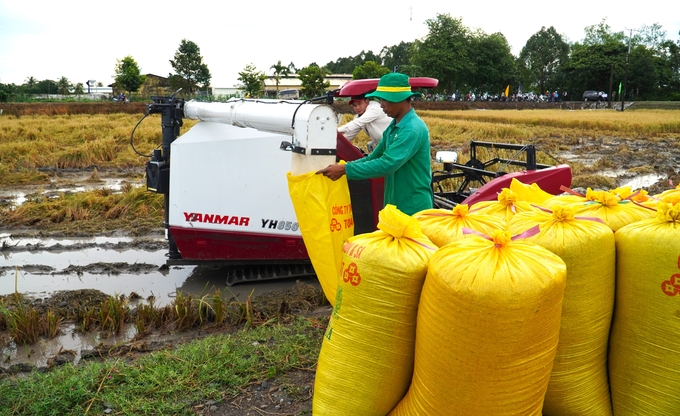
The Vietnam Food Association said that in the last few months of the year, the price of rice in the market will most likely continue to increase, due to a decrease in the supply of Indian rice. Photo: Kim Anh.
Vietnam's rice is mainly exported to Asian and African countries. The highest of which is the Philippines with an output of nearly 2.3 million tons in the first 8 months of the year. Followed by the Chinese market with more than 520 thousand tons. Vietnam's rice is exported to the Ivory Coast and Ghana in the Africa.
While forecasting the market for the last 4 months of 2022, Mr. Nguyen Ngoc Nam, Chairman of the Vietnam Food Association, said that internationally speaking, India is restricting exports of several rice products, Thailand is reinforcing policies to support the domestic rice industry and the Philippines is strictly controlling rice imports; these are the factors that are determining the outcome of the world rice trade market.
On the other hand, Mr. Nam assessed, Vietnam's rice exports have recently had a strong shift, focusing on the segment of fragrant, high-quality rice. More importantly, popular rice varieties such as Dai Thom 8, OM 5451, OM 18 are dominant and highly competitive. "These are rice varieties for the rice segment that meet market demand and are highly competitive compared to the fragrant rice segments of Thailand and Cambodia", said Mr. Nam.
Namely, out of the total 6.2 million tons of rice exported by Vietnam in 2021, fragrant rice reached 2.5 million tons, accounting for 41.2%; high-quality white rice reached 2.3 million tons, accounting for 37.63% and sticky rice accounts for 16.37% of Vietnam's total rice exports. Commenting on the structure of this exported rice varieties, Mr. Nam affirmed that the trend of shifting, focusing on high-quality groups for export is a priority for many provinces, especially in those in Mekong Delta region.
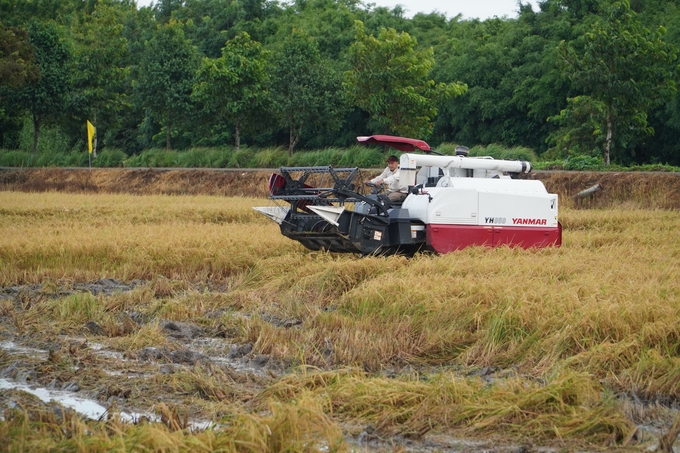
Harvesting the autumn-winter rice crop in the Mekong Delta. Photo: Kim Anh.
Regarding the situation of rice exports in the immediate future, Mr. Nam said that India is currently a prominent rice exporter, accounting for at least 40% of the global rice trade market share. In 2021, India exported 21.5 million tons of rice, which is higher than countries including Vietnam, Thailand, Myanmar and the US. In the first 6 months of 2022, this country has exported approximately 11 million tons of rice. However, the ban on export of broken rice by India and the imposition of export tax on white rice has affected the rice supply chain. Therefore, it is likely that rice prices in the market will continue to increase in the last few months of the year, due to a decrease in the supply of Indian rice.
Additionally, Mr. Nam said that the price and the world rice trade situation are generally stable; it is necessary to closely monitor the developments of the domestic and foreign markets in the near future. From the harvest of the autumn-winter rice crop, Mr. Nam believes that Vietnam will reap great successes in rice exports with the 2022-2023 winter-spring crop.
According to the rice export plan for 2022, Vietnam will export 6.3 to 6.5 million tons of rice, which is 100 to 200 thousand tons higher compared to that of 2021. Namely, Vietnam plans to export around 1.5 to 1.7 million tons in the last 4 months of 2022.
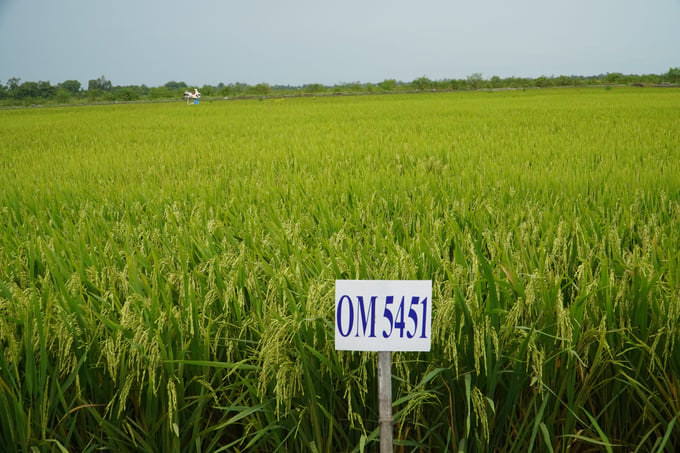
High-quality rice variety OM 5451 is prioritized in many provinces in the Mekong Delta. Photo: Kim Anh.
In order to effectively contribute to these goals, Mr. Le Thanh Tung, Deputy Director of the Department of Crop Production under the Ministry of Agriculture and Rural Development, said that the Southern region will sow around 1.58 million hectares for for the winter-spring crop of 2022-2023, with 1.5 million hectares in the Mekong Delta.
In the west of Hau River and Long Xuyen Quadrangle, priority will be given to the application of high-intensity rice varieties with good quality. In the sweet alluvial area along the Tien and Hau rivers, priority is given to the application of high-yielding high-quality rice varieties. The main rice varieties applied include: OM 18, OM 5451, OM 4900, Dai Thong, Jasmine 85 and so on.
Translated by Nguyen Hai Long
/2025/06/12/3721-2-202745_83.jpg)
(VAN) TH made an impression at Seoul Food 2025 with its line of natural beverages, paving the way for Vietnamese food products to enter the South Korean market.
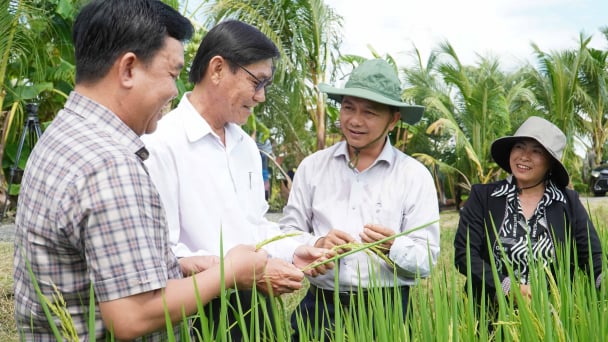
(VAN) Soc Trang's success in rice exports stems from a strategy of developing fragrant and specialty rice cultivation areas and standardizing production toward low-emission practices.
/2025/06/11/1311-5-120811_839.jpg)
(VAN) The pig farming industry is facing the challenge of comprehensive restructuring to meet requirements for quality, safety, traceability, and market expansion both domestically and for export.
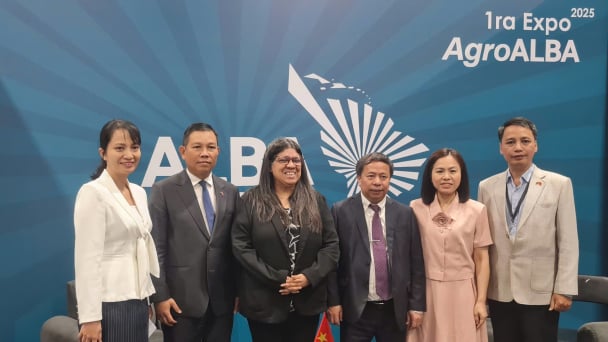
(VAN) Vietnam considers participating in ALGROALBA in order to expand agricultural production, coordinate the assessment and effective exploitation potential land.
/2025/06/05/5314-1-184727_407.jpg)
(VAN) From seemingly worthless fish scales and skin, enzymes and lactic ferments can transform by-products into peptides, opening a sustainable, effective business direction and elevating Vietnamese seafood.
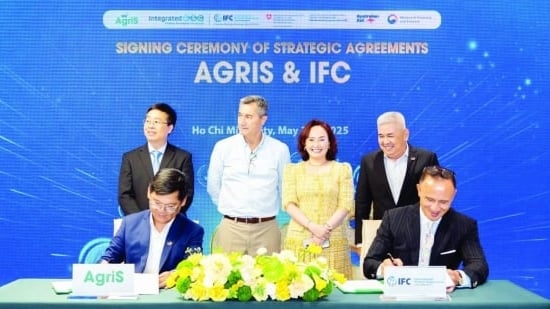
(VAN) TTC AgriS and IFC signed a strategic partnership to develop a sustainable agricultural value chain, aiming to achieve the Net Zero target by 2035.
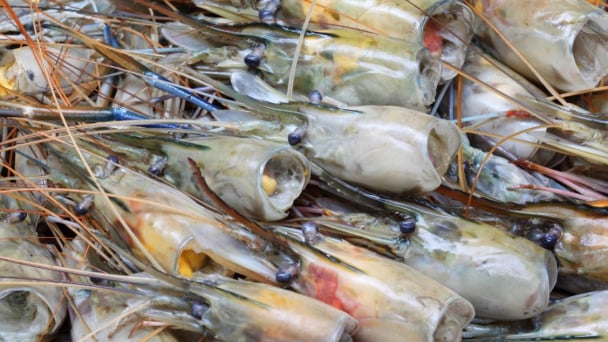
(VAN) Seafood by-products are opening a new path, combining green growth and technological innovation to enhance the industry's value.